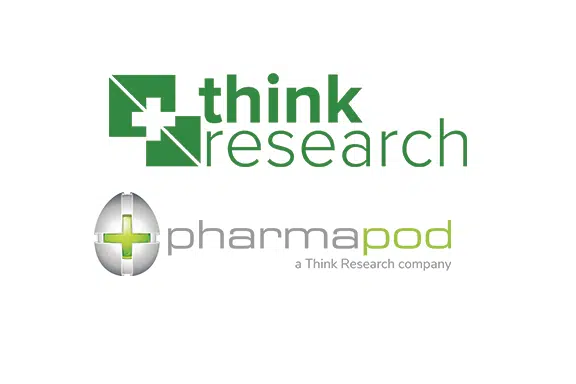The Alberta College of Pharmacy has announced the plan to implement CQI+, an initiative to empower the safety culture in Alberta community pharmacies through continuous quality improvement processes and the sharing of information about practice incidents. CQI+ is represented in Domain 6 of the new Standards. The deadline for compliance with CQI+ is February 1, 2026.
It’s essential for pharmacies to align their practices with these new standards sooner rather than later. This is more than a deadline—it’s an opportunity to elevate pharmacy operations to exceptional levels of safety and efficiency. Pharmapod can help – we are the leading global cloud-based software system for incident management and quality improvement work.
What You Need to Do
Domain 6 of the Standards for the Operations of Licensed Pharmacies (SOLP) is effective as of February 1st, 2025, and it requires pharmacies to foster a culture where all team members are dedicated to continuous quality improvement by supporting the following six standards:
- Safety culture and just culture
- Prevention of practice incidents
- Managing practice incidents
- Analysis of practice incidents and close calls
- Follow-up process
- Collecting patient feedback and managing patient concerns
The standards emphasize continuous learning and improvement over a punitive approach. Instead of attributing blame, pharmacies are encouraged to examine systemic factors that might contribute to practice incidents.
If you’re concerned about complying with CQI+, Pharmapod can help you manage your practice incidents. Our cloud-based platform offers the tools you need to comply with CQI+, including:
- Mandatory and optional data fields
- Privacy and Security: SOC2 accredited, all data is stored in Canada
- Training and Support: live and online
- Anonymous data integration with the National Incident Data Repository (NIDR)
- Patient-centred forms for both incident and close-call reports.
- Continuous Quality Improvement (CQI) tools, built-in root cause analysis, learning points, action plans, follow-ups, notifications
- Safety Reports: consolidated data into one report for staff meetings
- Analytics: built-in dashboards and charts
READY TO GET STARTED? Email carla.beaton@thinkresearch.com or chris.crocco@thinkresearch.com.
How Pharmapod Can Help Ensure CQI+ Compliance
Pharmapod is a comprehensive digital pharmacy platform designed to:
- streamline medication safety processes
- facilitate compliance with regulatory requirements
- enhance patient care outcomes
As the CQI tool of choice in over 70% of pharmacies across Canada, we understand the complexities of complying with various pharmacy regulatory requirements and have tailored our solution to ensure all needs are met. Our platform helps you establish a structured continuous quality improvement (CQI) program to identify and address risks by reporting incidents and close calls, analyzing root causes, and implementing action plans to prevent future incidents.
1. Safety and Just Culture
The new standards provide a roadmap for implementing effective change through what is known as a “just culture.” This framework promotes accountability and is built on the belief that all incidents and close calls offer valuable learning opportunities.
Implementing a safety culture is reliant on regular reporting of errors and good catches/close calls – these provide opportunities to learn and improve processes. However, fostering this type of workplace culture requires tools that make reporting and communication seamless—and that’s where Pharmapod excels.
Anonymous Reporting: Pharmapod’s user-friendly platform enables pharmacists and staff to quickly and easily report incidents or risks. Only data fields from the ISMP data sharing agreement (flagged in the reports) are automatically shared anonymously with the NIDR, ensuring transparency and compliance.
Clear Procedures: The system provides step-by-step guidance for reporting incidents, ensuring that no detail is overlooked and everyone on your team feels empowered to contribute.
Built-In Training: Pharmapod also offers training tools that reinforce the principles of a safety culture and a just culture, ensuring staff are consistently aligned with safety expectations.
By embedding safety and just culture practices in its platform, Pharmapod enables you to establish a foundation of trust and accountability within your pharmacy teams. This open and honest environment fosters teamwork and collective responsibility for patient safety, and, over time, makes it more difficult for pharmacy staff to commit avoidable errors and supports a more reliable and efficient pharmacy operation.
LEARN MORE about establishing a Just and Safety Culture in our on-demand webinar. WATCH NOW
2. Prevention of Practice Incidents
Preventing practice incidents starts with identifying risks before they escalate. The ACP underscores the need for CQI systems, procedures, and strategies designed to anticipate potential issues. By tailoring CQI plans to your pharmacy’s unique needs, you can effectively mitigate risks and improve patient outcomes.
Pharmapod’s powerful CQI tools ensure all relevant information is captured, stored, and easily accessible in one location. All recorded medication incident data is automatically populated into the platform’s CQI tools, preventing duplication of work while providing actionable insights to optimize patient care.
In just a few clicks, pharmacies can identify systemic issues and implement targeted corrective actions to prevent the recurrence of errors. CQI reports for staff meetings can also be generated instantly within the platform.
The result? Pharmacies that leverage Pharmapod see fewer incidents because they can act preventively—not reactively.
3. Managing Practice Incidents Effectively
When incidents do occur, an organized response is crucial. The ACP standards require the patient to be promptly informed and provided with the appropriate care. Pharmacies are also required to discuss details of the incident with applicable team members and take action to prevent a possible recurrence.
The first step in incident management is precise documentation, which is easily done in Pharmapod. Once the documentation is in place, pharmacy teams should adopt a collaborative approach to identify solutions. By involving all relevant team members in the problem-solving process, pharmacies can develop more effective action plans, helping prevent similar incidents from occurring in the future.
Pharmapod provides an instant report summary and can generate a range of comprehensive reports, including event trend analysis and contributing factors.
4. Analyzing Trends in Incidents and Close Calls
CQI+ isn’t just about fixing problems—it’s about leveraging data to make smarter decisions. Pharmapod’s advanced analytics tools allow you to extract valuable insights from practice incidents and close-call events, helping refine your processes over time.
Detailed Metrics and Reports: Pharmapod breaks down incidents by type, root cause, frequency, and more—saving you time and giving you the full picture of what’s occurring within your operations. Data is automatically populated into charts and graphs with customizable filters to enable comparisons by region/facility/timeframe, so you can monitor trends and measure and track key performance indicators.
Trend Analysis: Use Pharmapod’s visual dashboards to uncover patterns that can inform better prevention strategies. Reporting all close calls quickly provides the data required to see the trends in your organization.
Data Sharing Across Teams: Share insights with your team using Pharmapod’s collaborative tools, ensuring all stakeholders stay informed about the latest trends and action points.
With Pharmapod providing meaningful insights at your fingertips, analyzing incidents turns from a chore into a strategic advantage.
5. Follow-Up Process
What you do with an error or good catch matters more than the mistake itself. Pharmapod helps pharmacies track and manage corrective and/ or preventative actions with Action Plan templates and reminders. Proactive Self Assessments and Quality Improvement Plans can be completed directly within the platform. Everything you need is conveniently in one place. Pharmapod streamlines communication between pharmacy staff, facilitates task assignments, and monitors progress towards resolution, ensuring timely implementation of improvement measures.
An integrated resources library, in addition to monthly training sessions, ensure pharmacy staff understand and are able to utilize the platform effectively. From onboarding sessions to ongoing support, we work with you to ensure your pharmacy achieves and maintains CQI+ compliance.
6. Collecting Patient Feedback and Managing Patient Concerns
Patients are an invaluable source of information when it comes to continuous quality improvement. By actively seeking feedback and managing patient concerns, pharmacies can enhance their service delivery and ensure that their practices align with patient expectations.
Feedback can be added to the incident details within the platform for review and analysis to identify areas for improvement in care delivery. This functionality ensures that feedback doesn’t go unaddressed and that it contributes to continuous improvement in care quality.
Simplify CQI+ Compliance Today
Pharmapod is purpose-built to support pharmacies in Alberta as they adapt to the CQI+ mandate. By standardizing incident reporting, enabling root cause analysis, and fostering a culture of meaningful quality improvement, Pharmapod empowers pharmacy teams to meet regulatory requirements and elevate patient safety. Choose Pharmapod as the online practice incident management platform to meet CQI+ requirements.
Get started with CQI+ compliance today and be ready for the February 1st, 2026 deadline—contact carla.beaton@thinkresearch.com or chris.crocco@thinkresearch.com.
+ + +
Pharmapod software meets all the reporting platform requirements for mandatory CQI programs in Nova Scotia, Saskatchewan (COMPASS), New Brunswick, Manitoba (Safety IQ), Alberta (CQI+), Prince Edward Island, and Newfoundland and Labrador (MedSTEP NL).
Pharmapod contributes anonymous data to the National Incident Data Repository for Community Pharmacies (NIDR) of the Canadian Medication Incident Reporting and Prevention System (CMIRPS). Incident data from NIDR is used by ISMP Canada strictly for the purposes of analysis, shared learning, and incident prevention strategy formulation.










